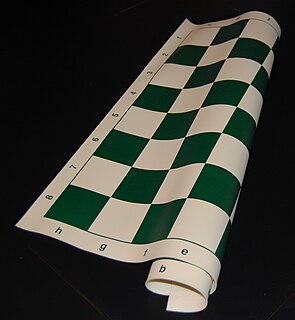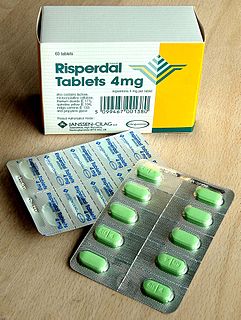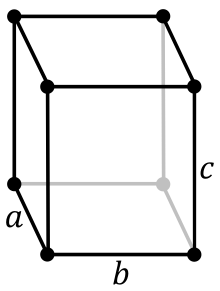In polymer chemistry, polymerization is a process of reacting monomer molecules together in a chemical reaction to form polymer chains or three-dimensional networks. There are many forms of polymerization and different systems exist to categorize them.

Polyvinyl chloride is the world's third-most widely produced synthetic plastic polymer, after polyethylene and polypropylene. About 40 million tonnes are produced per year.

In chemistry, vinyl or ethenyl (abbreviated as Vi) is the functional group with the formula −CH=CH2. It is the ethylene (IUPAC ethene) molecule (H2C=CH2) less one hydrogen atom. The name is also used for any compound containing that group, namely R−CH=CH2 where R is any other group of atoms.

A thermoplastic, or thermosoftening plastic, is a plastic polymer material that becomes pliable or moldable at a certain elevated temperature and solidifies upon cooling.

Tetrahydrofuran (THF) is an organic compound with the formula (CH2)4O. The compound is classified as heterocyclic compound, specifically a cyclic ether. It is a colorless, water-miscible organic liquid with low viscosity. It is mainly used as a precursor to polymers. Being polar and having a wide liquid range, THF is a versatile solvent.

Phthalates, or phthalate esters, are esters of phthalic acid. They are mainly used as plasticizers, i.e., substances added to plastics to increase their flexibility, transparency, durability, and longevity. They are used primarily to soften polyvinyl chloride (PVC).
An oligomer is a molecular complex of chemicals that consists of a few repeating units, in contrast to a polymer, where the number of monomers is, in principle, infinite. Dimers, trimers, and tetramers are, for instance, oligomers composed of two, three, and four monomers, respectively.

Wood-plastic composites (WPCs) are composite materials made of wood fiber/wood flour and thermoplastic(s).
Artificial leather, also called synthetic leather is a material intended to substitute for leather in upholstery, clothing, footwear, and other uses where a leather-like finish is desired but the actual material is cost-prohibitive or unsuitable. Artificial leather is marketed under many names, including "leatherette", "faux leather", "vegan leather", "PU leather" and "pleather".
Vinyl polymers are a group of polymers derived from vinyl monomers of the type CH2=CHR. Their backbone is an extended alkane chain ...-CH2-CHR-CH2-CHR-..). In popular usage, "vinyl" refers only to polyvinyl chloride (PVC).

Provincetown Municipal Airport is a public airport located at the end of Cape Cod, two miles (3 km) northwest of the central business district of Provincetown, in Barnstable County, Massachusetts, United States. This airport is operated by the Town of Provincetown on land leased from the U.S. National Park Service.
Craig J. Hawker is an Australian-born chemist. His research has focused on the interface between organic and polymer chemistry with emphasis on the design, synthesis, and application of well-defined macromolecular structures in biotechnology, microelectronics and surface science. Hawker holds more than 45 U.S. patents and has co-authored over 300 papers in the areas of nanotechnology, materials science and chemistry. He was listed as one of the Top 100 most cited chemists worldwide over the decade 1992–2002. and again in 2000-2010. Hawker is currently the director of the California Nanosystems Institute and holds a number of other laboratory directorships at the University of California, Santa Barbara.

Blister pack is a term for several types of pre-formed plastic packaging used for small consumer goods, foods, and for pharmaceuticals.
Synthetic resins are industrially produced resins, typically viscous substances that convert into rigid polymers by the process of curing. In order to undergo curing, resins typically contain reactive end groups, such as acrylates or epoxides. Some synthetic resins have properties similar to natural plant resins, but many do not.
Stabilizers are a class of chemical additives commonly added to polymeric materials, such as plastics, to inhibit or retard their degradation. Polymers can be subject to various degradation processes, including oxidation, UV-damage, thermal degradation, ozonolysis, or combinations thereof like photo-oxidation. These processes all degrade the polymer on a chemical level, leading to chain scission that can adversely affect its mechanical properties such as strength and malleability, as well as its appearance and colour.
A polymeric foam is a foam, in liquid or solidified form, formed from polymers.

Plastic is material consisting of any of a wide range of synthetic or semi-synthetic organic compounds that are malleable and so can be molded into solid objects.

PolyOne Corporation is a global provider of specialized polymer materials and services. PolyOne has operations in thermoplastic compounds, specialty polymer formulations, color and additive systems, thermoplastic resin distribution, and vinyl resins. In 2010, PolyOne was ranked the #1 in the “Top North American Compounders” list by Plastics News.












